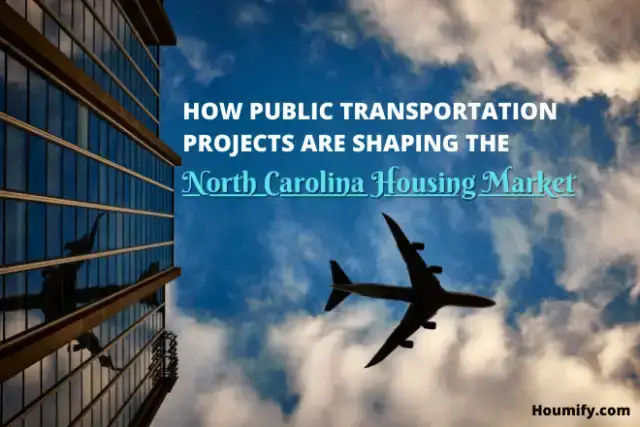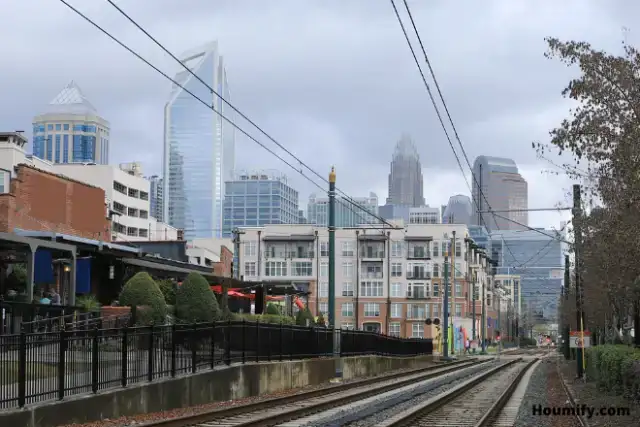How Public Transportation Projects are Shaping the North Carolina Housing Market
The Growing Influence of Public Transportation on North Carolina’s Housing Market
In recent years, public transportation projects have become pivotal in shaping the real estate market across various regions in the United States. North Carolina, a state known for its vibrant cities and rapidly growing metropolitan areas, is experiencing an increased interest in transit-oriented development (TOD). The connection between public transportation and real estate trends cannot be overstated, as these projects directly impact property values, accessibility, and overall growth potential.
For those looking to invest in North Carolina’s housing market, understanding the long-term effects of public transportation projects is critical. Whether you’re a homeowner, investor, or simply interested in the future of urban development, this article will provide you with a comprehensive look at how transportation infrastructure projects are influencing housing demand in the Tar Heel state. From rising property values to new development hotspots, these projects play a vital role in where people choose to live and how communities grow.

The Search Intent Behind "Public Transportation Project Impact on North Carolina Housing Market"
When people search for "Public Transportation Project Impact on North Carolina Housing Market," they are likely seeking information on how new and upcoming transportation projects are changing the landscape of real estate in the state. The search intent here is informational, as users want to learn about the direct effects of transportation on housing prices, areas of growth, and investment opportunities.
In addition to general information, some users may have a transactional or commercial search intent, meaning they might be exploring real estate options in areas with planned transportation upgrades. They are likely interested in understanding where they can buy or rent properties with increased connectivity, or how these developments could affect property values in the future.
Understanding the specifics of how transportation infrastructure can shape local economies and real estate markets is crucial for anyone looking to make informed decisions about where to live or invest in North Carolina.
The Impact of Public Transportation on Housing Demand in North Carolina
Public transportation projects have been proven to influence housing markets by making certain areas more desirable to live in. As transportation options expand, neighborhoods and cities that were once considered remote or underserved can suddenly become more accessible, drawing in new residents and businesses. In North Carolina, several significant public transportation initiatives are having this very effect, particularly in cities like Charlotte, Raleigh, and Durham.
1. Increased Property Values and Demand
One of the most significant impacts of public transportation projects is the potential for increased property values. As access to reliable transportation options improves, property values tend to rise in areas with new transit access. For instance, in Charlotte, the introduction of the LYNX Blue Line light rail has not only provided residents with more efficient transit options but has also led to increased development and rising property prices in areas near the rail stations. This trend is expected to continue with future expansion plans of the light rail and bus rapid transit systems in other areas of the city.
Similarly, Raleigh’s expanding bus system and new commuter rail projects are set to drive up property demand along these routes. Properties near transit hubs typically see an increase in value, driven by the convenience of public transportation for residents who wish to avoid long commutes or car dependence.
2. Transit-Oriented Development (TOD) Opportunities
Transit-Oriented Development (TOD) is a planning and design concept that seeks to maximize the benefits of public transportation systems by encouraging high-density, mixed-use development around transit stations. North Carolina has embraced TOD as a way to stimulate sustainable growth and reduce traffic congestion.
For example, the new planned developments around Raleigh’s Union Station and Durham’s future transit hubs are expected to offer a mix of residential, commercial, and retail spaces. These developments not only create a vibrant urban environment but also attract real estate investors looking for properties with long-term growth potential. The TOD model has shown to encourage investment in public infrastructure, which, in turn, boosts the real estate market.
3. Shifting Housing Preferences and Urban Sprawl
The increased availability of public transportation can also lead to changes in housing preferences. As more people embrace urban living and seek convenience, areas with transit access become more attractive. This shift can reduce urban sprawl, as people opt for denser, transit-accessible living spaces over sprawling suburban homes that require a car for commuting.
In cities like Charlotte, the demand for apartment complexes and condominiums near transit stations is increasing, as many residents prefer walking or taking public transit over driving. These changes are altering the demand for different types of housing, leading to more mixed-use developments and a shift away from car-dependent suburban living.

Key Public Transportation Projects in North Carolina That Are Shaping the Housing Market
Several key public transportation projects are currently transforming the North Carolina housing market. Understanding these projects is crucial for both homeowners and real estate investors. Let’s take a closer look at some of the most significant developments:
1. Charlotte Area Transit System (CATS) – Light Rail Expansion
The CATS light rail system, particularly the LYNX Blue Line, has already had a profound impact on the Charlotte housing market. Future plans to extend the Blue Line and add more light rail routes are expected to increase property demand in nearby neighborhoods, offering new opportunities for both residential and commercial real estate developments.
2. Durham and Chapel Hill – Regional Transit Plan
Durham and Chapel Hill are collaborating on a regional transit plan that includes light rail and bus rapid transit (BRT) systems. The project aims to connect these two cities more efficiently and improve access to the Research Triangle Park, which will likely boost the housing market in surrounding areas.
3. Raleigh – Commuter Rail and Bus Rapid Transit
Raleigh’s new commuter rail and BRT systems are expected to have a transformative effect on the city’s real estate market. By improving connectivity within the Triangle region, these projects will open up previously underdeveloped areas to new housing and investment opportunities.
The Long-Term Effects: Sustainability and Real Estate Investment Opportunities
As North Carolina continues to invest in public transportation infrastructure, long-term trends will likely emerge, reshaping not only the housing market but the state’s overall urban planning strategies. Transportation improvements can lead to more sustainable and walkable communities, which will, in turn, attract environmentally conscious buyers and renters.
Real estate investors who anticipate these shifts can capitalize on the growing demand for homes and properties near transit hubs. Furthermore, the added convenience of public transportation can create mixed-use developments that foster thriving communities. This makes North Carolina an increasingly attractive market for both residents and investors seeking future growth potential.
The Future of North Carolina’s Housing Market and Public Transportation
The intersection of public transportation projects and the housing market in North Carolina is more than just a trend—it’s an opportunity for growth and development. With new projects in cities like Charlotte, Raleigh, and Durham, the housing market is poised for significant changes, with both property values and living preferences being influenced by transit access.
For anyone interested in North Carolina’s real estate landscape, staying informed about these public transportation projects is essential. Whether you are a homeowner looking to relocate or an investor searching for new investing opportunities, the expansion of public transportation in North Carolina presents a unique chance to tap into growing, dynamic communities.
We’d love to hear your thoughts on how public transportation projects are impacting the housing market in your area. Share your comments below, and don’t forget to share this article with your social network!


